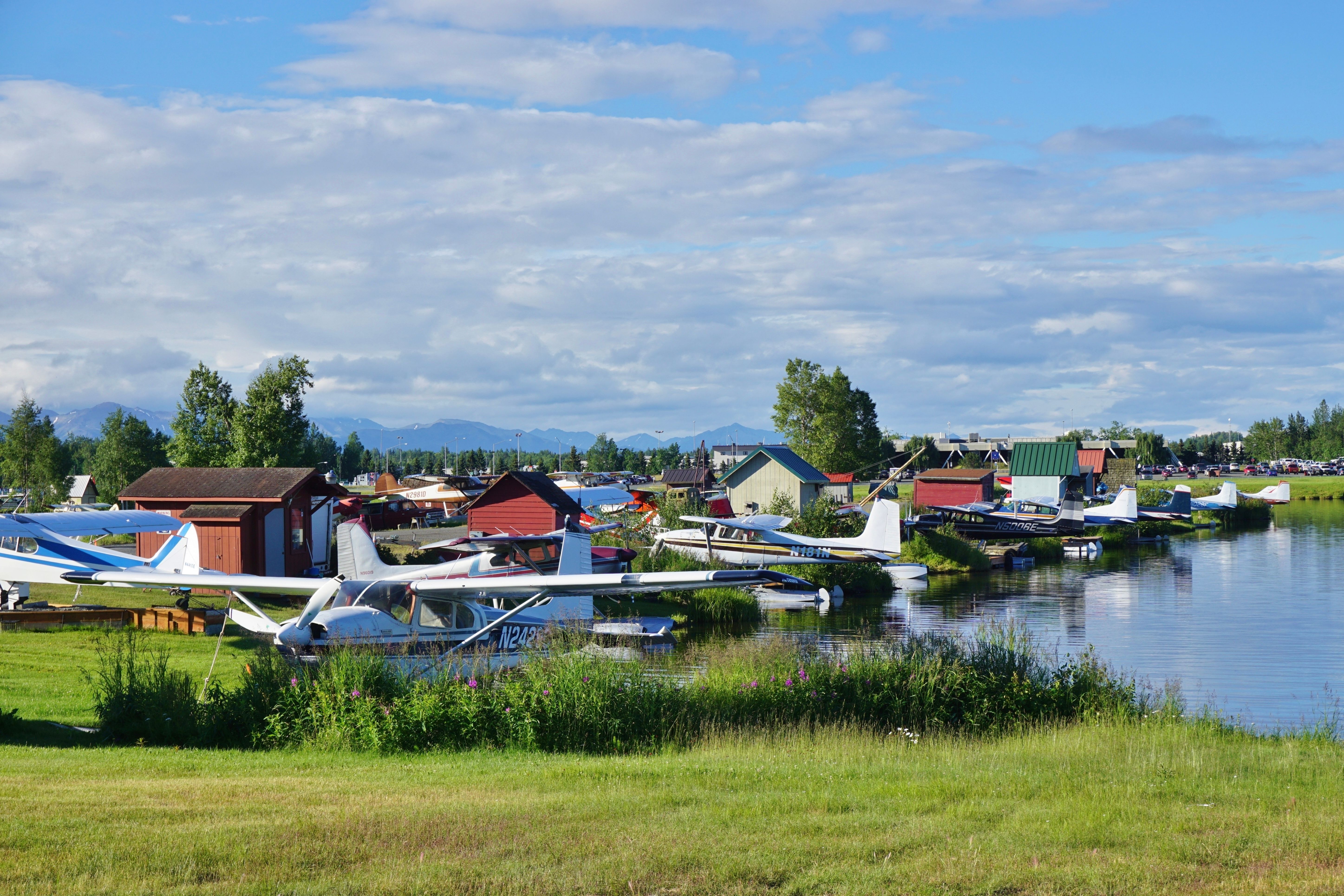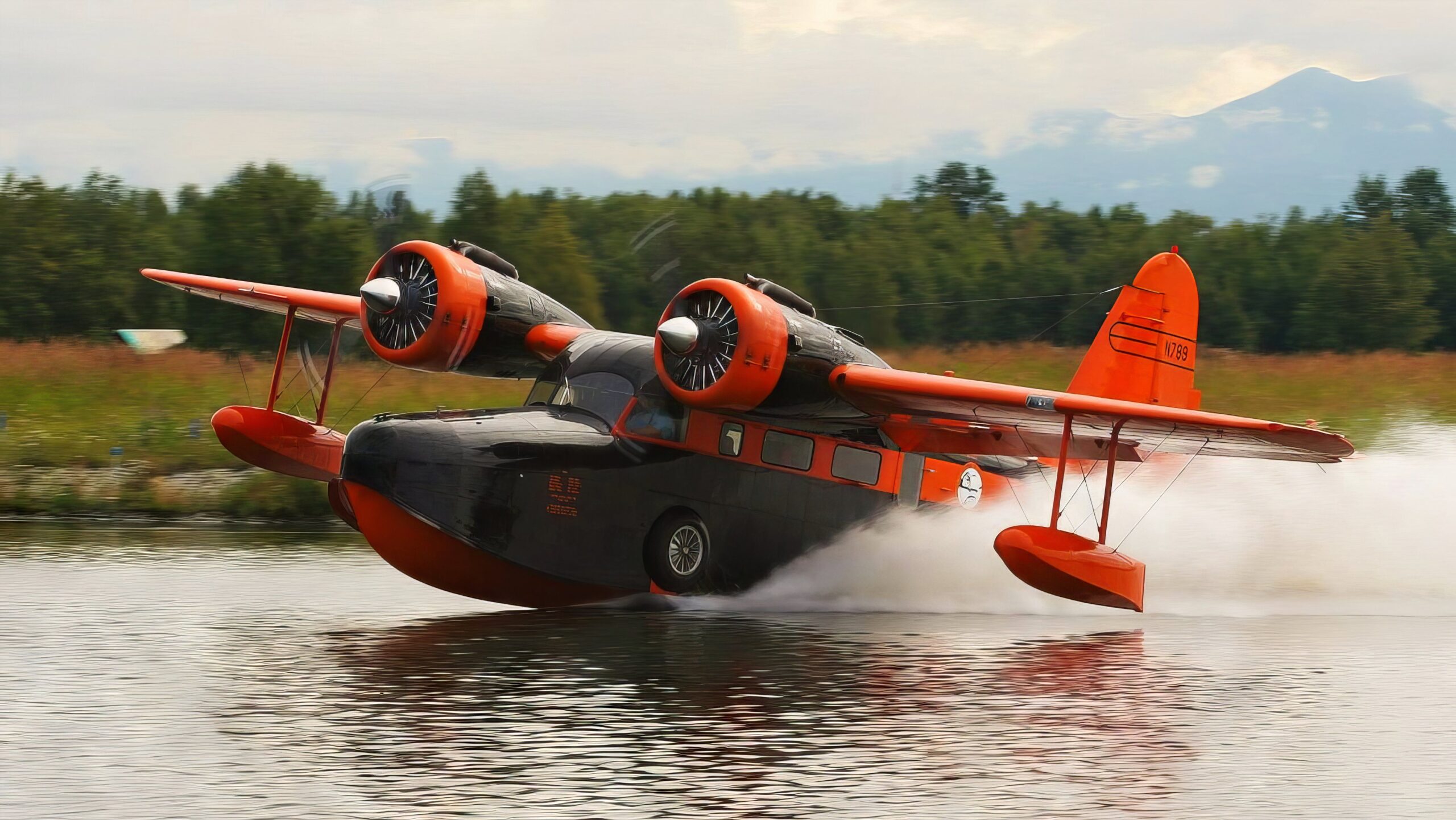Summary
- Restored 1943 Grumman G-21A Goose once used by Alaska Fish and Game now flying after 16 years.
- Museum’s mission to preserve Alaska’s aviation history showcased with flying Grumman Goose N789.
- The Grumman Goose has historical significance and is part of Alaska’s aviation heritage, fulfilling the mission of the Alaska Aviation Museum.
Thanks to the Alaska Aviation Museum, one of the 345 Grumman Goose amphibious aircraft built is flying again after 16 years of rest. The restoration adds to the museum’s growing aircraft history collection.
Restoring N789, A 1943 Grumman G-21A Goose
For the Alaska Aviation Museum, based in Anchorage, Alaska, the N789 1943 Grumman Goose restoration continues the Museum’s mission, “To preserve, display, educate, and honor Alaska’s aviation heritage.” The museum displays everything from a 1924 World Cruiser “Seattle” exhibit commemorating the first world circumnavigating flight to World War II and Alaska Airlines history to finally an F-15A Eagle. So, having a flying Grumman Goose in N789 fits right in.
See N789, which represents not just a type of aircraft used around Alaska, but also the aircraft used by Alaska Fish and Game. Alaska Fish and Game is the State of Alaska’s primary agency for protecting fish and wildlife from poaching, invasive species, and more. The agency needs mobile transportation to get into the vast Alaskan backcountry and conduct aerial patrols. That’s where a flying Grumman Goose comes in after six months of work.
After six months of volunteer work, including from some of the former Alaska Fish and Game employees who worked on N789 before, the Goose flew again on May 29. According to Alaska’s News Source, the test pilot for the museum Burke Mees shared,
“This particular airplane was a Fish and Wildlife airplane, but yeah, they’re just kind of a part of day-to-day life in the state of Alaska for an awful long time. So it’s kind of a nice exhibit for the museum to have one.”
One can watch a webcam stream of the Grumman Goose flying around Anchorage’s Lake Hood below:
But why is the Grumman Goose so significant to Alaskan aviation history? We explore below.
About the Grumman Goose
The circa 1943 Grumman Goose is one of the 30 or so Grumman Goose seaplanes still flying. Initially, the Grumman Goose, according to the Cradle of Aviation Museum, was intended for business travel. As the Cradle of Aviation Museum put affairs,
“In 1936 Grumman was approached by several wealthy Long Islanders who wanted an aircraft for their personal transportation. They needed an aircraft large enough to carry their families and baggage on trips, luxurious enough to fit their business needs, and with the ability to operate from land or sea. These men intended to leave from the water that bordered their Long Island mansions and fly as commuters to a seaplane base located at the foot of Wall Street. The aircraft’s original $60,000 purchase price discouraged all but the wealthiest buyers; however, it was an immediate success.”
The particular Goose variant, G-21A, was intended for civilian use. Only 30 were built, and 500 pounds of gross weight capability was added.
One should also note that $60,000 US Dollars in 1936 is about $1.35 million US Dollars today. Currently used Cessna Caravan floatplanes, according to controller.com – generally just as capable as a 1943 Grumman Goose – are worth more.
Lake Hood, Part of Anchorage International Airport
Lake Hood, on whose shores the nonprofit Alaska Aviation Museum sits on, is a part of Ted Stevens Anchorage International Airport and the world’s largest seaplane base by volume and land mass. Earlier this year, Simple Flying profiled Lake Hood as an airport:

Related
190 Flights A Day: Inside Lake Hood, Alaska – The World’s Busiest Seaplane Base
Just next to Alaska’s busiest airport is the world’s largest and busiest seaplane base, operating both seaplanes and bush planes.
The Lake Hood Seaplane Base operates an average of 190 flights daily with a strategic location next to Alaska’s busiest land-based airport. Anchorage International Airport was profiled last February.
Save the dates for aviation history
On Sunday, July 14th, from 10 AM until 4 PM, the Alaska Aviation Museum will hold an open house with food trucks, games, drinks, and live music. This is the day after the Seattle Museum of Flight’s special 75th Anniversary of Seattle-Tacoma International Airport event and a few months before the First World Flight Centennial Celebration at Seattle’s Sand Point that the aforementioned World Cruiser “Seattle” participated in on September 28.
What are your takeaways? Please share in the comments.
